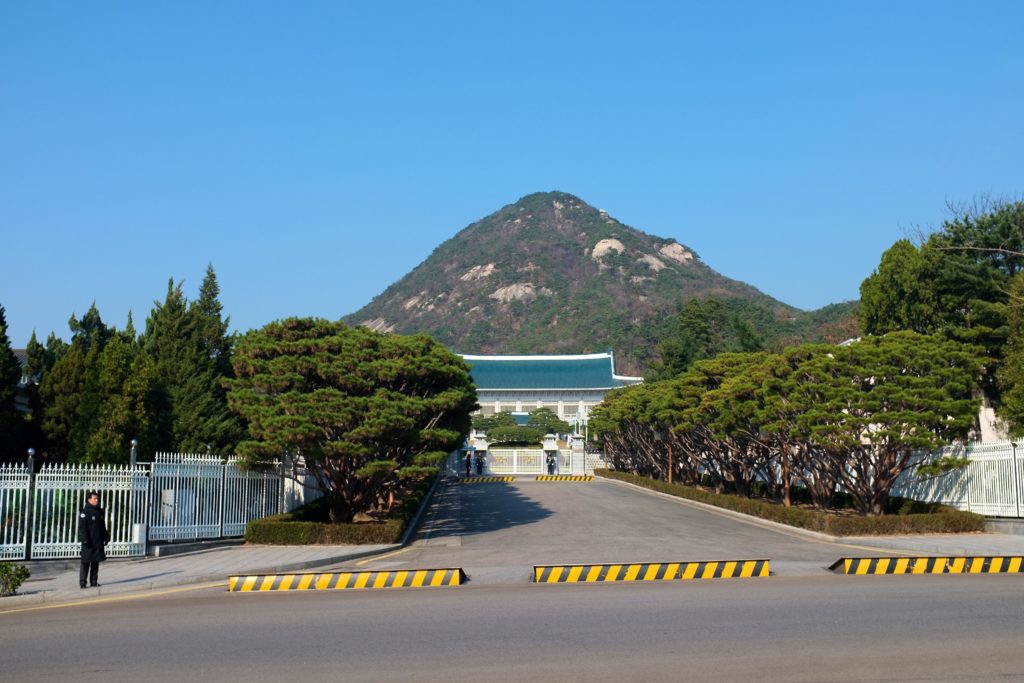The Peninsula
U.S.-Korea Relations: Don’t Drive a Wedge

By Mark Tokola
There is a small but growing body of commentary arguing that Washington and Seoul are drifting apart on North Korea policy. At the headline level, there clearly is a difference in tone between President Trump’s tough rhetoric and President Moon Jae-in’s insistence that the only acceptable resolution to the North Korean nuclear issue is a peaceful one. Extrapolating from this, commentators have praised or condemned Donald Trump for upping the stakes on armed conflict on the Korean Peninsula; and have praised or condemned Moon Jae-in for putting a premium on peaceful engagement. Trump has become either a “decisive leader” or a “war monger,” and Moon either a “man of peace” or an “appeaser.” There are significant dangers to letting these caricatures take hold. One of Kim Jong-un’s dreams would be for a rift to develop between the United States and South Korea. It should be one of the last things we would want.
It would be untrue to say that rhetoric doesn’t matter. It certainly does matter as a signal of intentions. However, policy doesn’t only consist of rhetoric. Look more closely at what the Trump and Moon Administrations have said and done in regard to North Korea. Both have insisted that their goal is denuclearization. Both have said that they do not seek regime change but rather a change in North Korean behavior. Both have said that they seek a peaceful resolution of the crisis. Both have emphasized the important role China should play in restraining North Korean behavior.
Even in the details of their policies, President Moon and President Trump have agreed: (1) to deploy THAAD in the face of public protests in South Korea; and, (2) contrary to the desires of pro-engagement voices in both the United States and in South Korea, they have both rejected the Chinese proposal of a “dual freeze” to halt U.S.-ROK military exercises in purported exchange for a North Korean testing freeze. Moon Jae-in has been outspoken that North Korean nuclear and missile tests are unacceptable. Like President Trump, President Moon has warned North Korea that an attack on his country would be met with an overwhelming military response.
Moon Jae-in’s policy towards North Korea does differ from that of his conservative predecessors Park Geun-hye and Lee Myung-bak. He places more emphasis on unification as a long-term process of integration. The border between the two states would gradually blur as the systems merged through increased economic cooperation and people-to-people ties — inevitably but not hurriedly along democratic and free market lines. His conservative predecessors placed more emphasis on unification taking place in the nearer term, and on the need to prepare for a single, unified state. There is not a vast different between Moon Jae-in’s vision of North-South integration and Park Geun-hye’s early policy of “Trustpolitik” – which is yet another reason for Americans not to jump to conclusions about Moon being ‘soft’ on North Korea.
The differences between the Korean progressives and conservatives are not ones that should roil the U.S.-ROK alliance. The U.S. dealt successfully in the past with progressive South Korean administrations. No South Korean political leader of note believes that South Korea would benefit from the opening of a gap between the U.S. and South Korea. There is widespread support for the alliance among the South Korean people and for a U.S. military presence in Korea. For the United States’ part, far from insisting that South Korea not deal with North Korea, long-standing U.S. policy has been to tell Pyongyang that they must deal with South Korea.
The real mystery is why North Korea has not bothered to attempt to drive a wedge between Seoul and Washington. Kim Jong-un could easily do so by responding to President Moon’s attempts to engage in ways that could complicate the alliance. Kim Jong-un could offer to reopen the Kaesong Industrial Complex on South Korea’s terms, or could invite President Moon to Pyongyang for a summit, or could offer peace and arms control talks on the condition that U.S. forces be reduced or removed from South Korea. Instead, Kim Jong-un has not even bothered to reply to South Korean initiatives to engage. Furthermore, Kim Jong-un has said that Moon Jae-in is nothing more than a puppet of the U.S. and may be “even worse than his predecessors.” Kim Jong-un may not be trying to split the alliance because he has not seen an opening to do so – yet.
Two reasonable, basic principles for the U.S. in dealing with North Korea are: first, do nothing that damages the U.S.-ROK alliance; and second, do nothing that strengthens Kim Jong-un’s position. Putting Donald Trump and Moon Jae-in into opposing camps unnecessarily does both.
Mark Tokola is the Vice President of the Korea Economic Institute of America. The views expressed here are his own.
Photo from Aram Kudurshian’s photostream on flickr Creative Commons.
